Feeling a bit stumped on how to make your kiddos’ fishing trips more engaging and successful? Trust me, you’re not alone! Like many parents, I found myself scratching my head, trying to figure out the ideal approach for introducing the little ones to the timeless art of fishing.
After countless hours delving into fun and safe strategies, I’m excited to share with you a comprehensive guide featuring three stellar tips on helping children reel in their ‘Fishing Guide Achievement.’ Are we ready to create some unforgettable moments together? Let’s dive right in!
Key Takeaways
- Choose the right fishing gear for kids: Select properly sized rods and reels, use lighter lines and smaller hooks, and pick kid-friendly tackle and bait to make fishing easier and more enjoyable for children.
- Teach safety and basic fishing techniques: Explain the importance of wearing life jackets, show children how to cast and reel in a fish, and teach them how to handle fish safely.
- Keep the trip fun and engaging: Make fishing exciting with games like scavenger hunts or casting competitions. Bring snacks, drinks, and entertainment to keep kids entertained during downtime. Encourage exploration of nature to enhance their overall experience.
- Instill conservation values: Teach catch-and-release practices, discuss different fish habitats, and promote responsibility for the environment during fishing trips with children.
Choose the Right Fishing Gear for Kids
When taking kids fishing, it’s important to choose the right gear for them.
Properly sized fishing rods and reels
Kids need the right size fishing gear. When they use fishing rods and reels that fit their small hands, it is easier for them. They can handle the kit better. It also helps them to stay safe when they fish.
The style of reel is important too. Think about getting a spinning or spincasting reel for your child’s rod. This kind of reel works well with kids’ rods. Also, look into kid-sized waders as part of their gear set up even though there might not be many options out there.
Use lighter lines and smaller hooks
Fishing is a lot of fun for kids. It gets even better with the right gear. Light lines and small hooks are great choices for kids. They make fishing simple and safe.
Small hooks catch more fish. Light lines let them feel any pull on their line. This helps kids know when to reel in a fish. Also, these gears do not tire them out so they can enjoy fishing all day long.
Bobbers also help spot when a fish bites the bait. A bobber that dips under water means it’s time to pull in!
The best rods are those made just for children. These have been tested by other kids so we know they work well.
Gone fishing? Catch and release is the way to go! Try barbless hooks – they’re kinder to the fish you catch and good for safety too!
So, pick up some light lines, small hooks and hit out for a fun filled day of fishing!
Select kid-friendly tackle and bait
Picking the right gear makes fishing fun for kids. Start with a rod they can hold easily. Kids need light rods that are not too long. Barbless hooks are safer for little hands. Giving them good bait raises their chance to reel in a fish! Many types of bait work well, so try out different ones to see which is best.
Some fishing rods made just for kids come with cool add-ons, like stickers or color-changing lines. These features can make your child’s fishing time even more exciting!
Essential Tips for Beginners: Guide to Fishing Achievement
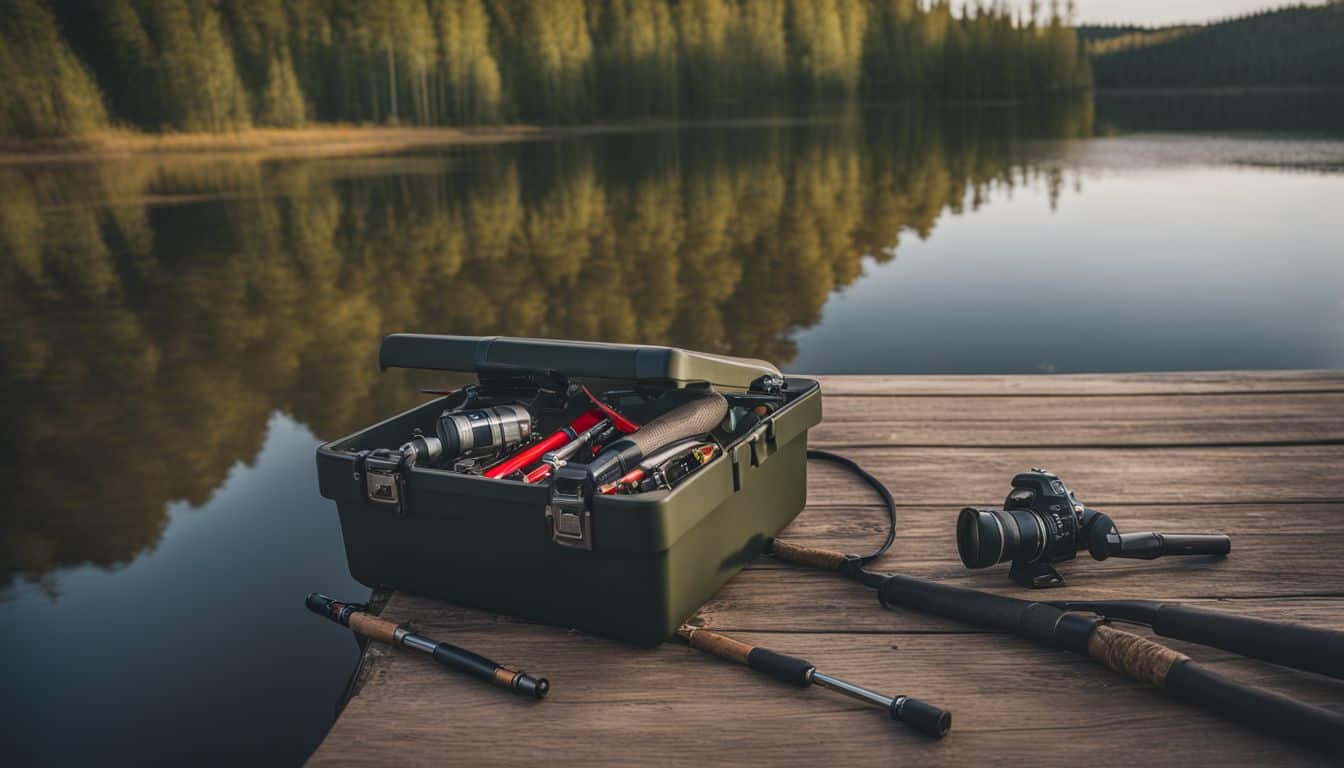
When starting out in fishing, there are a few essential tips that can help beginners achieve success. First and foremost, it’s important to choose the right fishing gear. This includes properly sized rods and reels for kids, as well as using lighter lines and smaller hooks.
It’s also helpful to select kid-friendly tackle and bait that is easy for them to use.
Teaching safety and basic fishing techniques is another important aspect of achieving success in fishing with children. This involves explaining the importance of wearing life jackets, showing them how to cast and reel in a fish, and teaching them how to handle fish safely.
To keep the trip fun and engaging for kids, it’s a good idea to make fishing exciting with games and challenges. Bringing snacks, drinks, and entertainment can also help keep their interest.
Additionally, encouraging exploration and observation of nature can enhance their overall experience.
Patience is key when teaching children how to fish. It’s important to teach them patience while enjoying the process rather than putting pressure on catching fish. Celebrating their achievements along the way can also boost their confidence.
Teaching conservation and respect for the environment should be emphasized during fishing trips with children. Discussing catch-and-release practices, teaching about different fish species’ habitats, and instilling a sense of responsibility for the environment are all valuable lessons that can be taught during these outings.
Being prepared for the elements is crucial when going on a fishing trip with kids. Dressing appropriately for the weather conditions, bringing sunscreen hats or insect repellent if necessary will ensure everyone stays comfortable throughout the trip.
Planning where you go fishing will play an important role in making sure it’s enjoyable for kids while considering their attention span endurance level age group you’re taking into consideration always aim choosing calm easily accessible locations so that you don’t discourage anyone from wanting trying again
Lastly participating in any kind Kid-Friendly Fishing Events Incentives this will create excitement eye-catching memories for kids introducing them to fishing in the right way
Remember, when it comes to fishing with children, the most important thing is to have patience and enjoy the experience. Focus on spending quality time together and creating lasting memories and bonding, regardless of whether or not you catch fish.
Teach Safety and Basic Fishing Techniques
Explain the importance of wearing life jackets, show them how to cast and reel in a fish, and teach them how to handle fish safely. Discover these essential tips for fishing success with your kids!
Explain the importance of wearing life jackets
Wearing life jackets is really important for kids when they’re fishing or doing any activities near water. Life jackets are all about safety and protection in the water. They help with buoyancy, which means they help you float if you fall in the water.
Life jackets are also called personal flotation devices or PFDs. They’re designed to keep you afloat and safe if something happens while you’re on a boat or swimming in open waters.
It’s crucial that children wear properly fitting life jackets that meet safety standards because they can save lives in case of an emergency.
Show them how to cast and reel in a fish
Teaching children how to cast and reel in a fish is an important skill to learn when fishing. Here are some tips to help you show them how:
- Start by explaining the basic concept of casting and reeling.
- Show them how to hold the fishing rod properly.
- Demonstrate how to cast the line out into the water.
- Teach them how to reel in the line by turning the handle of the reel.
- Encourage them to practice casting and reeling in a safe area before heading out on a fishing trip.
Teach them how to handle fish safely
When fishing with children, it is important to teach them how to handle fish safely. Here are some tips to ensure their safety and the well-being of the fish:
- Use barbless hooks: Barbless hooks are easier to remove from a fish’s mouth, reducing harm and stress to the fish.
- Wear protective eyewear: Encourage children to wear polarized sunglasses or safety goggles to protect their eyes from hooks, flying bait, or sharp objects.
- Provide personal flotation devices (PFDs): Whenever fishing near water, make sure children wear properly fitting PFDs. Keep a float and line accessible in case any emergencies arise.
- Teach water safety precautions: Explain the importance of staying away from deep water, strong currents, and slippery surfaces. Children should be aware of potential risks and understand how to react safely.
- Follow fishing rules for kids: Set clear guidelines about where they can stand or sit while fishing, handling fish gently, and respecting nature. Teaching them proper fishing etiquette helps instill conservation values.
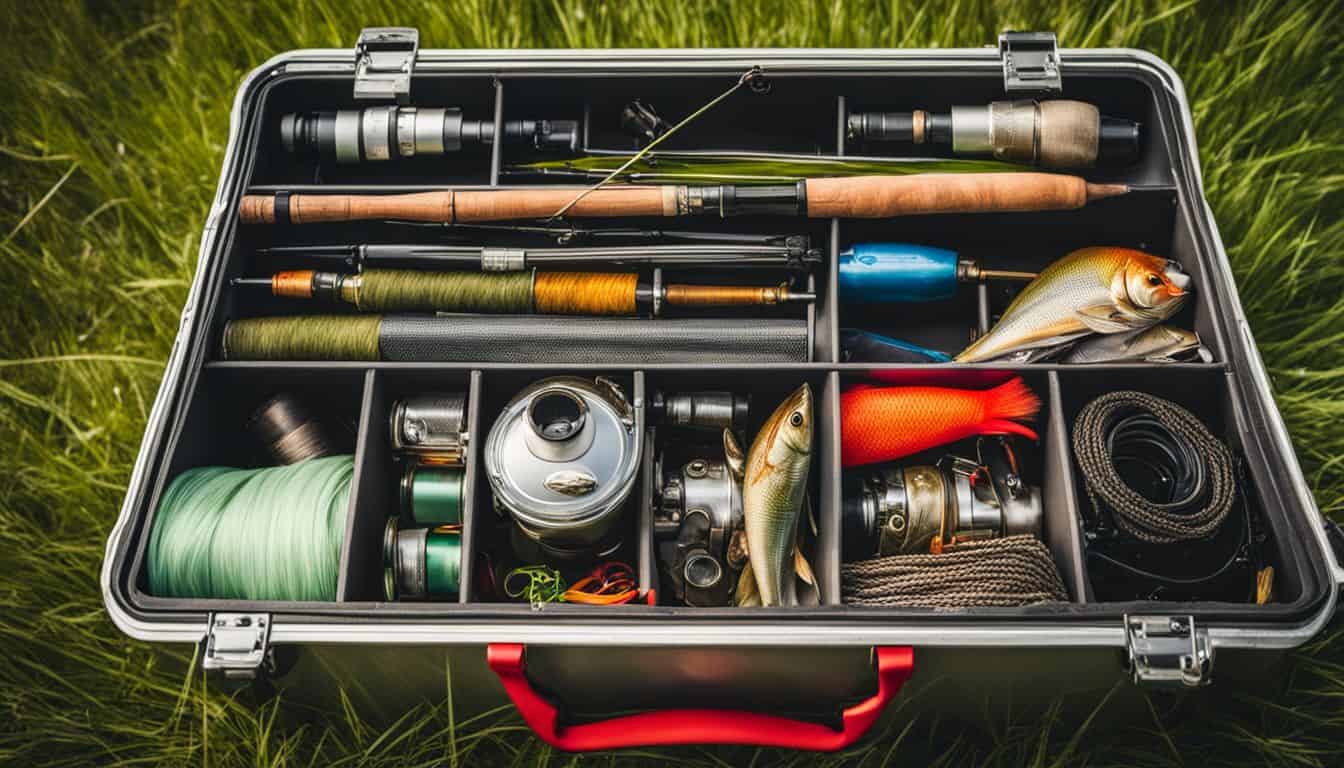
Keep the Trip Fun and Engaging
Make fishing exciting by creating games and challenges for your kids to enjoy while they wait for a bite.
Make fishing exciting with games and challenges
I love making fishing trips exciting for kids! Here are some fun games and challenges to keep them engaged:
- Create a fishing scavenger hunt: Make a list of different fish species or fishing-related items that kids can search for during the trip. It adds an element of adventure to their experience!
- Set up a casting competition: See who can cast the farthest or most accurately. Provide small prizes or rewards for the winners. It’s a great way to improve their casting skills and make it competitive.
- Play “Fish Bingo“: Create bingo cards with pictures of different fish species. As they catch each fish, they mark it off on their card. The first one to get a line or full house wins!
- Have a “Biggest Fish” challenge: Encourage friendly competition by awarding a prize for the child who catches the biggest fish of the day. It motivates them to keep trying and gives them something to aim for.
- Try target fishing: Set up targets in the water and challenge kids to cast their lines and try to hit them. It helps improve accuracy and adds an extra level of excitement.
Bring snacks, drinks, and entertainment
When planning a children’s fishing trip, it’s important to bring along some snacks, drinks, and entertainment to keep the experience fun and engaging. Here are some ideas to make sure you’re well-prepared:
- Pack a variety of snacks that your kids enjoy. This could include sandwiches, fruit, granola bars, or trail mix. Having a selection of options will help ensure that your children stay satisfied throughout the trip.
- Don’t forget to bring plenty of drinks, such as water, juice boxes, or sports drinks. Staying hydrated is important when spending time outdoors.
- Consider bringing some forms of entertainment to keep your kids entertained during downtime. This could include card games, coloring books, or small toys. Having something to do during breaks from fishing can help prevent boredom.
- Remember to bring any necessary fishing supplies and safety equipment as well. This includes fishing rods and reels, tackle boxes with kid-friendly gear and bait, life jackets for everyone in the family, and sunscreen or insect repellent if needed.
Encourage exploration and observation of nature
During fishing trips, it’s important to encourage children to explore and observe nature. Being in the great outdoors provides a wonderful opportunity for kids to connect with their natural surroundings.
They can learn about different plants, trees, and animals that inhabit the area. By encouraging them to take notice of the sights and sounds around them, they can develop a deeper appreciation for nature and wildlife.
This not only enhances their fishing experience but also helps instill a sense of environmental conservation in them. So while you’re out on your fishing adventure, take time to point out interesting things in nature and spark their curiosity about the world around them.
Patience and Positive Reinforcement
Teach kids to be patient and enjoy the process, celebrating their achievements and progress without putting pressure on them to catch fish.
Teach kids to be patient and enjoy the process
When teaching kids to fish, it’s important to remember that patience is key. It may take time for them to catch a fish, but the process of fishing itself can be enjoyable and rewarding.
By teaching kids to be patient, we are helping them develop important life skills such as perseverance and resilience. Patience is not always easy, but with practice and positive reinforcement, children can learn the value of waiting for things they want.
So instead of focusing solely on catching fish, let’s emphasize the joy of spending quality time together in nature and celebrating the small victories along the way.
Celebrate their achievements and progress
It’s important to celebrate the achievements and progress of children when it comes to fishing. By acknowledging their successes, we can help build their confidence and motivation to continue learning and improving.
Positive reinforcement, such as praising their efforts or giving them a small reward, can go a long way in encouraging them to develop a growth mindset and embrace new challenges. Whether they catch a fish or not, celebrating their efforts shows that we support and believe in them.
So let’s take the time to acknowledge their accomplishments and cheer them on every step of the way!
Avoid putting pressure on them to catch fish
When teaching children to fish, it’s important to avoid putting pressure on them to catch fish. Instead, it’s better to maintain a relaxed and positive attitude. Remember that fishing with kids is about having fun and creating lasting memories, regardless of whether they catch anything or not.
By being patient and offering positive reinforcement, you can help them enjoy the experience and learn valuable lessons like patience and persistence. So don’t focus solely on the end result of catching fish; rather, emphasize the process and the joy of spending quality time together in nature.
Teach Conservation and Respect for the Environment
Discuss the importance of catch and release practices, educate them about different fish species and their habitats, and instill a sense of responsibility for the environment. Find out more on how to teach children about conservation while fishing in our latest blog post!
Discuss catch and release practices
Catch and release practices are important for preserving fish populations and ensuring sustainable fishing. When we catch a fish, it’s crucial to handle it with care and release it back into the water properly.
This helps increase its chances of survival. Additionally, by practicing catch and release, we can contribute to wildlife preservation and habitat protection. Remember that responsible angling involves respecting the environment and promoting fish conservation.
By following ethical fishing practices like catch and release, we can be stewards of our natural resources and help maintain healthy fish populations for future generations to enjoy.
Teaching children about catch and release practices is an excellent way to instill in them a sense of responsibility for the environment at an early age. It’s essential to explain why releasing fish after catching them is important for their survival.
By discussing different strategies such as using barbless hooks or minimizing handling time, we can teach kids how they can become advocates for sustainable fishing practices too. Furthermore, teaching children about different species of fish, their habitats, and their importance in the ecosystem will foster an appreciation for biodiversity conservation.
Teach them about different fish species and habitats
Understanding different fish species and their habitats is an important aspect of fishing. It not only expands children’s knowledge but also instills a sense of respect for the environment.
By teaching them about fish species and habitats, we can promote conservation efforts and help them develop a deeper appreciation for the natural world. Children can learn about biodiversity, ecosystems, aquatic life, and the importance of maintaining ecological balance.
This knowledge empowers them to be more eco-conscious and understand the significance of protecting wildlife habitats as well as our natural resources. Through environmental education, we can foster sustainability and create future stewards of our planet’s precious ecosystems.
Instill a sense of responsibility for the environment
Teaching children about the environment and responsibility is an important aspect of fishing. By explaining catch and release practices, discussing different fish species and their habitats, and emphasizing the need to protect our natural resources, we can instill a sense of responsibility for the environment in children.
It’s crucial that we teach them about environmental stewardship, sustainable practices, and wildlife conservation. Through education and leading by example, we can help create environmentally aware individuals who understand the importance of ethical fishing and preserving our ecosystems for future generations.
Be Prepared for the Elements
Dress appropriately for the weather, bring sunscreen, hats, and insect repellent, and be prepared for changes in weather conditions.
Dress appropriately for the weather
When you’re going fishing, it’s important to dress appropriately for the weather so that you can stay comfortable throughout your trip. Whether it’s a sunny day or cold and windy, being prepared will make your fishing experience much more enjoyable.
Make sure to wear comfortable fishing attire that allows you to move freely. If it’s cold outside, don’t forget to layer up with appropriate gear like fishing gloves, headwear for freezing temperatures, and cold weather footwear.
And if it’s hot and sunny, protect yourself from the sun by wearing a hat, sunglasses, sunscreen, and lightweight clothing. Remember to bring a water bottle too! Being dressed right for the weather will ensure that nothing distracts you from having an amazing time out on the water!
Bring sunscreen, hats, and insect repellent
When taking children fishing, it’s important to keep them protected from the sun and insects. Here are some essential items to bring:
- Sunscreen lotion: Apply sunscreen before going outside to protect their skin from harmful UV rays.
- Sun hat: Make sure they wear a hat to shield their head and face from the sun.
- Bug spray: Use insect repellent to prevent bug bites while enjoying your fishing trip.
Be prepared for changes in weather conditions
Being prepared for changes in weather conditions is essential when taking children on a fishing trip. Weather can be unpredictable, and it’s important to ensure the safety and comfort of both yourself and your kids.
Always check the weather forecast before heading out and dress appropriately for the conditions. Bring sunscreen, hats, and insect repellent to protect against sunburns and bug bites.
Also, be aware of any potential climate change factors that could affect your fishing experience. By being prepared for changes in weather conditions, you can have a more enjoyable and safe fishing trip with your children.
Plan Fishing Locations and Timing
Choose fishing spots suitable for kids, considering their attention span and endurance, and opt for calm and easily accessible locations.
Choose fishing spots suitable for kids
When planning a fishing trip with kids, it’s important to choose fishing spots that are suitable for them. Here are some key factors to consider:
- Look for child – friendly fishing spots with ample space for casting.
- Find locations near your home that have easy access and restroom facilities.
- Consider open spaces around ponds or lakes to avoid casting mishaps.
- Check out specific locations recommended by the Department of Natural Resources Division’s Fisheries staff.
- Use the interactive map “101 Places (and Ways) to Take a Kid Fishing” for family – friendly fishing spots.
Consider their attention span and endurance
When planning fishing trips with children, it’s important to consider their attention span and endurance. Children have shorter attention spans, especially the younger ones. This means that they may become impatient if the trip is too long or if there are long periods of waiting without any action.
To accommodate their shorter attention spans, it’s a good idea to keep fishing trips short and engage them in different activities like games or exploration of nature. By being realistic about their attention span and making sure they are constantly engaged, you can make the experience enjoyable for both you and the children.
Opt for calm and easily accessible locations
When planning a fishing trip with kids, it’s important to choose calm and easily accessible locations. Look for serene spots that are convenient and safe for children. Public ponds or municipal lakes can be great options as they often have family-friendly amenities like picnic areas and restroom facilities.
Additionally, consider the accessibility of the location. Make sure it’s easy for kids to get to the water’s edge without any obstacles or hazards. By selecting calm and easily accessible locations, you’ll provide a comfortable environment for children to enjoy their fishing experience while ensuring their safety and enjoyment.
Seek out Kid-Friendly Fishing Events or Programs
Look for fishing clinics, workshops, and festivals designed specifically for children to enhance their fishing skills and experience. Joining fishing organizations or clubs can also provide a supportive community for kids interested in fishing.
Participating in these events can be a fun way to meet other young anglers and learn from experienced fishermen. Discover more tips and tricks on how to make your child’s fishing journey truly memorable by reading the complete blog post!
Look for fishing clinics or workshops for children
I highly recommend looking for fishing clinics or workshops specifically designed for children. These events provide a great opportunity for kids to learn and have fun while fishing. Here are some benefits of these kid-friendly fishing programs:
- Kids can learn essential fishing skills from experienced instructors.
- They can receive hands – on training in knot tying, casting, and using fishing tackle.
- These clinics often teach good angler practices and emphasize the importance of conservation and environmental stewardship.
- Children get to engage with other young anglers who share their interest in fishing.
- Fishing clinics usually provide all the necessary equipment, so kids can try out different types of gear without parents having to invest in expensive equipment.
Join fishing organizations or clubs for kids
Joining fishing organizations or clubs for kids can be a great way to get children involved in fishing. These organizations provide opportunities for children to engage in age-specific fishing activities and events, allowing them to learn and grow as anglers. By participating in these events or programs, kids can enhance their knowledge and skills related to fishing while also having fun.
- Access to kid-friendly fishing events: These organizations often organize fishing events specifically designed for children. These events provide a safe and supportive environment where kids can learn and practice their angling skills.
- Learning about conservation and the environment: Many fishing organizations or clubs prioritize teaching children about the importance of conservation and environmental awareness in fishing. Kids can learn about catch-and-release practices, different fish species, and the habitats they live in.
- Fostering ethical angling practices: Fishing organizations or clubs have specific rules and guidelines that children can learn and follow. This helps promote responsible fishing practices from an early age, instilling values of respect for the fish, the environment, and other anglers.
Participate in family fishing festivals or competitions
Participating in family fishing festivals or competitions is a fantastic way to engage in outdoor activities and promote fishing as a fun family event. These events offer numerous benefits for both children and parents. Here are some reasons why you should consider participating:
- Learn from knowledgeable instructors: Fishing festivals and competitions often have experienced instructors who can teach children about fishing techniques, rules, and ethics. This provides an excellent opportunity for kids to learn from experts in a supportive environment.
- Teach conservation and environmental responsibility: These events emphasize the importance of conservation and respecting the environment. Children can learn about catch-and-release practices, different fish species, and their habitats. It instills a sense of responsibility towards nature.
- Create lasting memories and bonding: Fishing with your family in these festivals or competitions can be an unforgettable experience that strengthens the bond between family members. It allows everyone to spend quality time together while enjoying the great outdoors.
- Develop patience through fishing: Fishing requires patience as you wait for the fish to bite. It teaches children the value of waiting calmly for something they want, which is a valuable life lesson.
- Affordable opportunities: Many of these events provide free or affordable fishing opportunities for both children and parents. This makes it accessible for families to participate in the sport without breaking their budget.
Have Patience and Enjoy the Experience
When fishing with children, it’s important to remember to have patience and simply enjoy the experience together.
Emphasize that fishing is about spending quality time together
Fishing is more than just catching fish. It’s about spending quality time together as a family and creating lasting memories. When we go fishing with our children, we have the chance to bond and share experiences in a relaxed outdoor setting.
We can enjoy each other’s company while appreciating nature and learning about conservation. Fishing trips provide an opportunity for us to teach our kids important values like patience, respect for the environment, and the joy of leisure activities.
So let’s focus on enjoying the experience and creating those special moments that will bring us closer as a family.
Focus on creating lasting memories and bonding
When it comes to fishing with children, it’s important to focus on creating lasting memories and bonding. Fishing is not just about catching fish; it’s about spending quality time together as a family and enjoying the experience.
Whether you catch a fish or not, the moments shared while fishing can create cherished memories for a lifetime. The time spent in nature, the laughter and conversations exchanged, and the sense of adventure all contribute to strengthening family bonds.
So instead of putting too much emphasis on catching fish, remember that the true value lies in the connection made with your child during this outdoor activity. Cherish these moments and enjoy the journey, regardless of whether you reel in a big one or not.
Enjoy the journey, regardless of the outcome
In fishing, it’s not just about catching fish. It’s about embracing the process and finding joy in every moment, whether you reel in a big catch or not. Remember that fishing is an experience to be cherished, where memories are made and bonds are strengthened.
So, practice patience, value the journey over the end result, and savor every moment spent by the water. Enjoying the journey is what truly matters in fishing!
Conclusion on Children’s Fishing Guide
In conclusion, the key to achieving the Children’s Fishing Guide Achievement with kids is to choose the right fishing gear, teach them safety and basic techniques, and make the trip fun and engaging.
By being patient, fostering a love for conservation, and being prepared for any conditions, you can ensure a successful fishing experience with children. Remember to enjoy the journey and create lasting memories while introducing them to the wonderful world of fishing.
FAQs on Children’s Fishing Guide
1. What are the best tips for children’s fishing success?
The best tips for children’s fishing success include using proper equipment, choosing the right bait, and learning basic casting techniques.
2. How can I help my child enjoy fishing?
You can help your child enjoy fishing by making it a fun and positive experience, teaching them patience and perseverance, and celebrating their achievements.
3. Do children need a fishing license to fish?
Fishing license requirements vary depending on the state or country. It is important to check local regulations to determine if a fishing license is required for children.
4. Is it safe for children to go fishing?
Yes, with proper supervision and safety precautions, fishing can be a safe activity for children. It is important to teach them about water safety, use appropriate gear, and supervise their actions near water bodies.
5. Can young children handle catching fish on their own?
Younger children may require assistance in handling caught fish due to its slimy texture or sharp fins. It is recommended that adults or older siblings provide guidance during this process to ensure both the child’s safety and the well-being of the fish before releasing it back into the water.

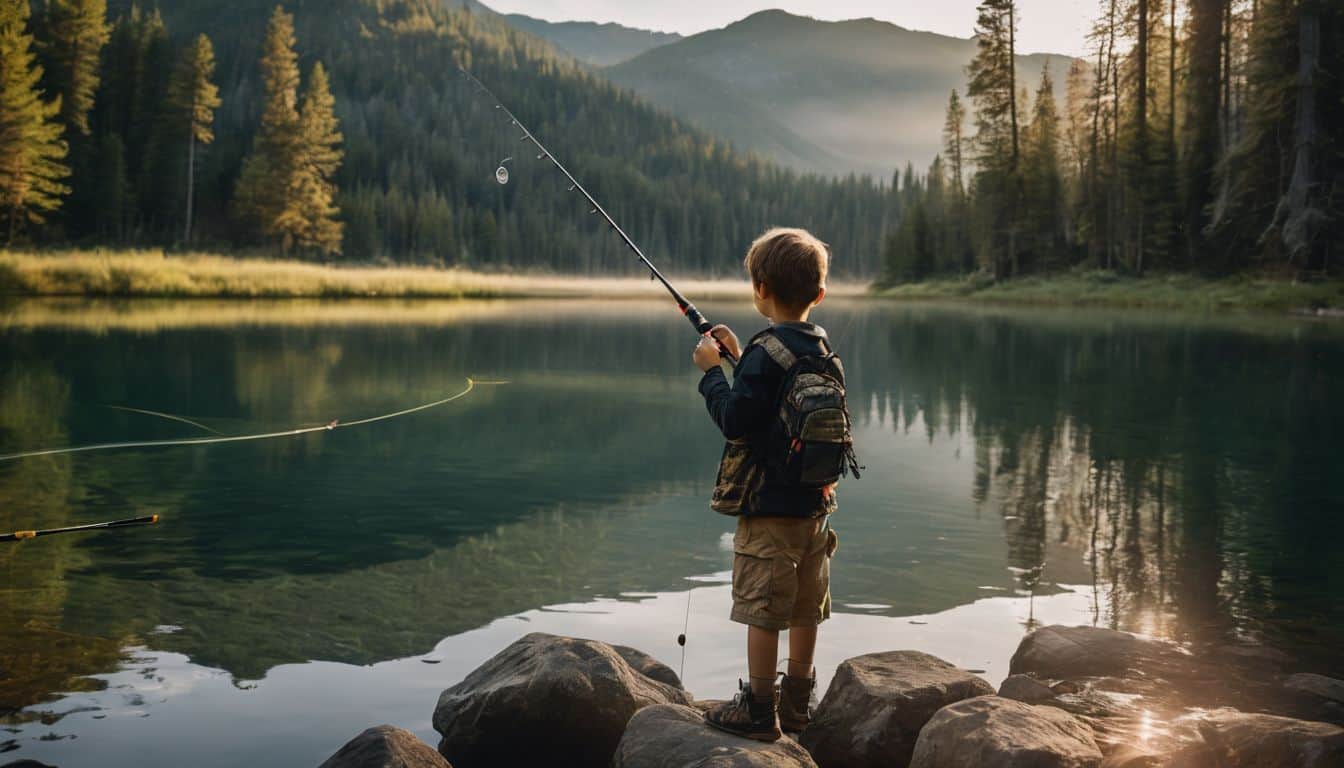
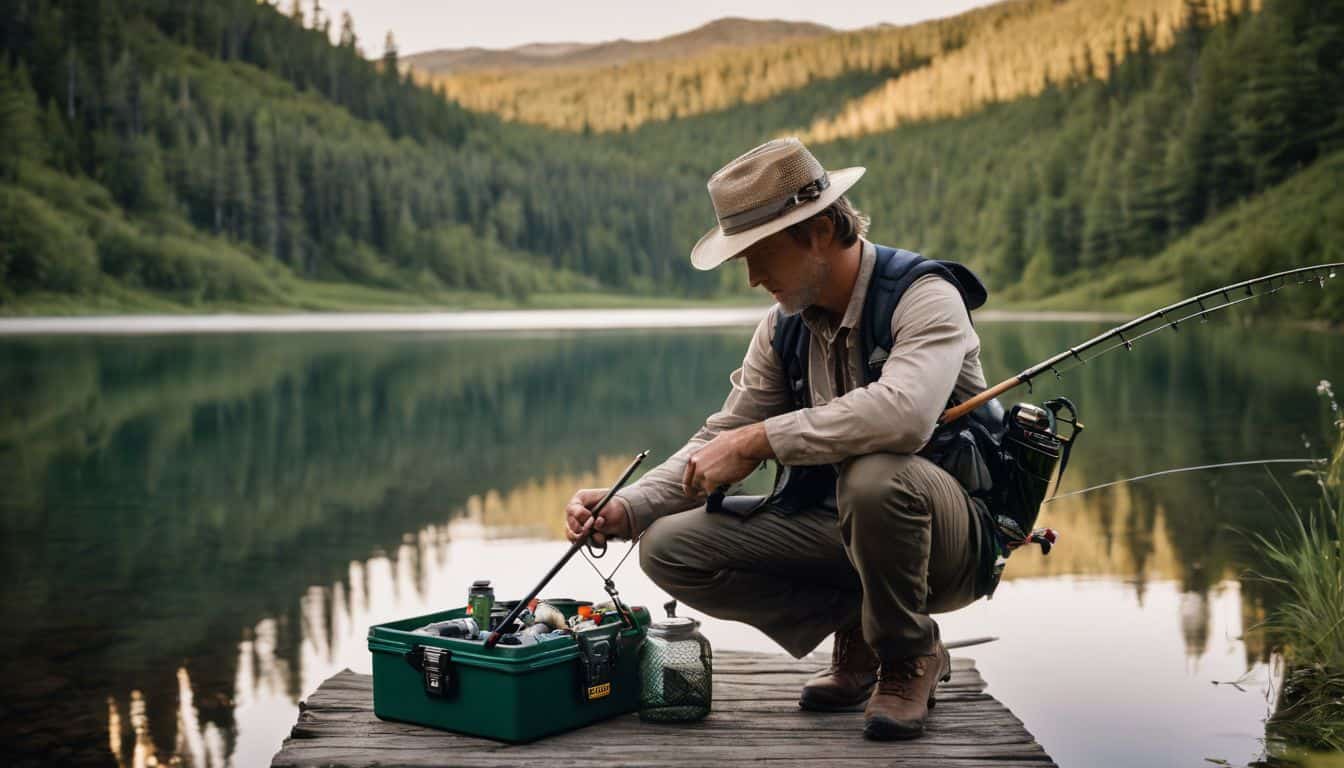
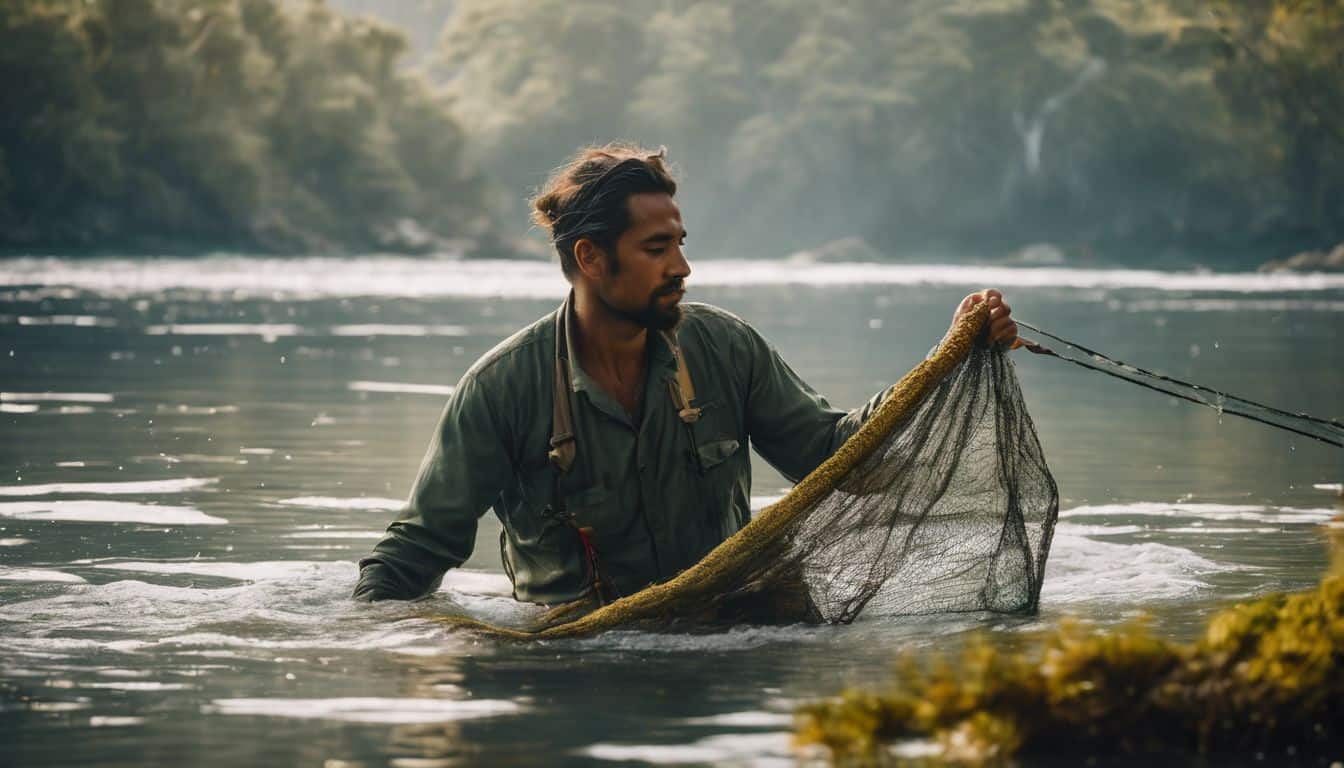
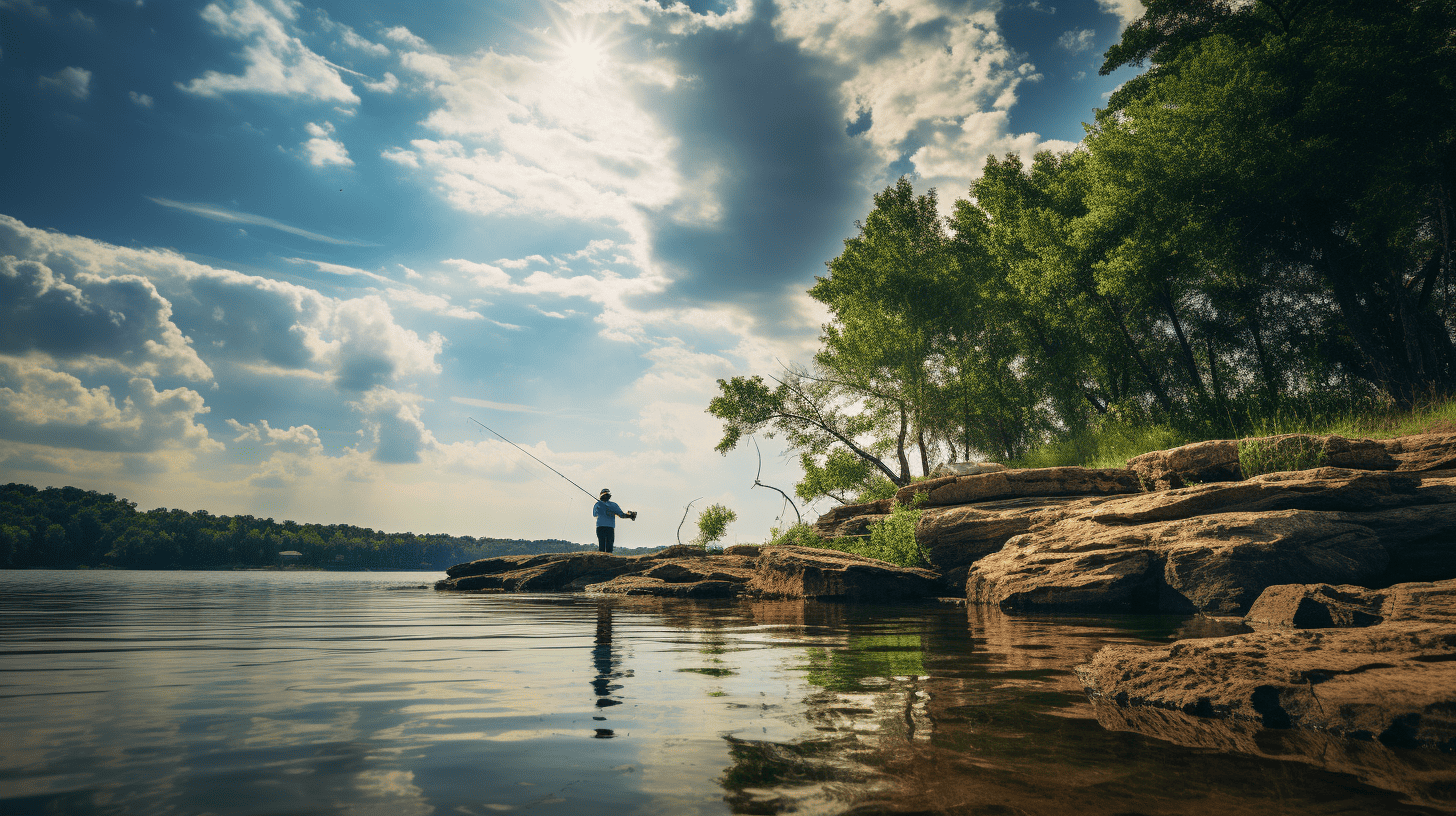
Leave a Reply